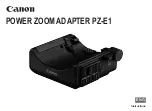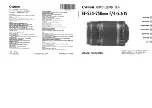
41
8018478/YWL5/2018-06| SICK
O P E R A T I N G I N S T R U C T I O N S | NAV245
Subject to change without notice
PRODUCT DESCRIPTION
3
Reflector width and reflector diameter
The minimum width for flat reflectors is 100 mm. The maximum usable width for reflectors
is 250 mm.
The recommended diameter of cylindrical reflectors is 80 mm. If the diameters of the
reflectors differ, it can lead to deviating measurement characteristics.
Recommendation
Use cylindrical reflectors as the measurement accuracy is higher than for flat reflectors
(
see “NAV245 data sheet”, page 72
Detection angle for flat reflectors
To detect a reflector, the measuring beam transmitted by the scanner head of the NAV245
must be reflected back to the scanner head. If the measuring beam hits the reflector
vertically (detection angle = 0°), a flat reflector acts like a mirror. The special 983-10
diamond-grade reflective tape reflects the measuring beam but then also reflects it back to
the scanner head if it hits the tape at other detection angles. The detection angle does not
depend on the measuring distance. The reflective properties of the 983-10 DG reflective
tape do not depend on the alignment.
Reflector reference points
To determine the coordinates of a reflector clearly with the NAV245, the reflector surface
must be reduced to a reference point:
With reflector strips, the reference point is located at the point of intersection between
the vertical center line of the cylinder and the scan plane, which is generally halfway up
the reflector.
With cylindrical reflectors, the reference point is located at the point of intersection
between the vertical center axis of the cylinder and the scan plane, which is generally
halfway up the reflector.
















































